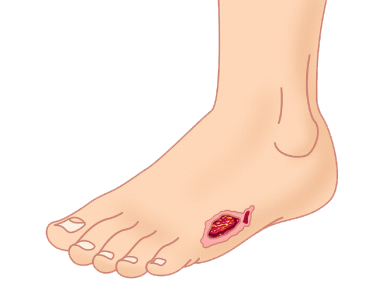Have a Doctor’s Referral?Book now

Diabetes causes your blood sugar levels to be unstable and can be higher or lower than normal. Over time, high blood sugar levels can damage the blood vessels and nerves in your body. Damage to your nerves means that you may have burning pain or lose feeling in a part of your body. This is often referred to as Diabetic Neuropathy Damage to the blood vessels in your feet, and means that your feet may not be getting a proper blood supply.
People with diabetes have to be very careful with their feet, because decreased circulation and other diabetic conditions could affect overall health of the foot. Diabetes affects the immune and circulation systems. This weakens the body’s capacity to heal itself. Diabetes can also injure sensory nerves in the foot. The risk of developing a large range of foot-related problems can increase with nerve damage and poor circulation.
You will see a certified pedorthist who specializes in foot mechanics,
conditions, and conservative treatments.
Diabetic Socks – The first line of protection for your feet is a sock that is specifically designed for the unique needs of people with diabetes. These socks have these key features:
A Human Kinetic Specialist at Kintec Footlabs can help you to find the best sock to meet your needs. These diabetic socks help reduce foot and leg swelling by increasing blood flow. This non-constricting sock promotes circulation and alleviates muscle fatigue, helping you feel revitalized and energetic throughout the day.
Proper Footwear
Orthotics for Diabetes – Uniform and improved pressure distribution is paramount to avoiding injury to the diabetic foot.
Soft, full contact orthotics are required to provide optimal pressure distribution.
Kintec’s F-Scan system can pick up subtle pressure points between the foot and shoe or insole that the practitioner cannot otherwise see. Find our more about Kintec’s orthotics.
Foot Complications – For those with diabetes, small foot problems, when left untreated, can turn into serious problems or infections that could lead to amputation. It is important to monitor for the following foot complications:
For more reading on Diabetes, read more from Kintec:
